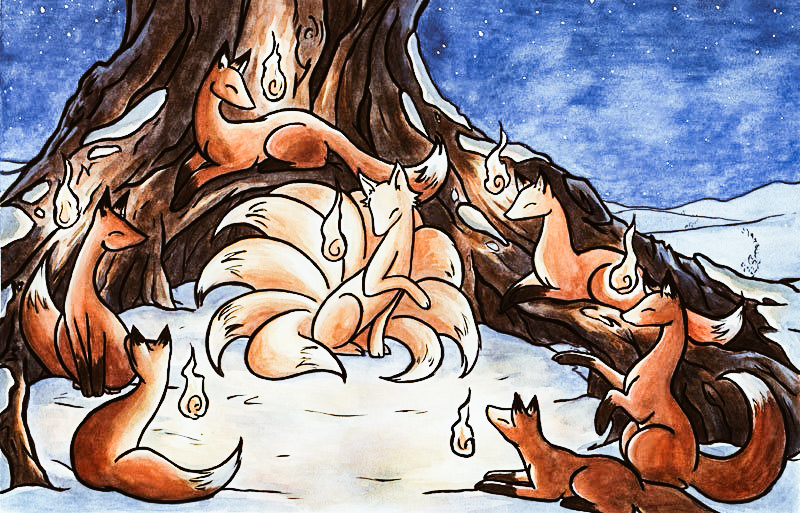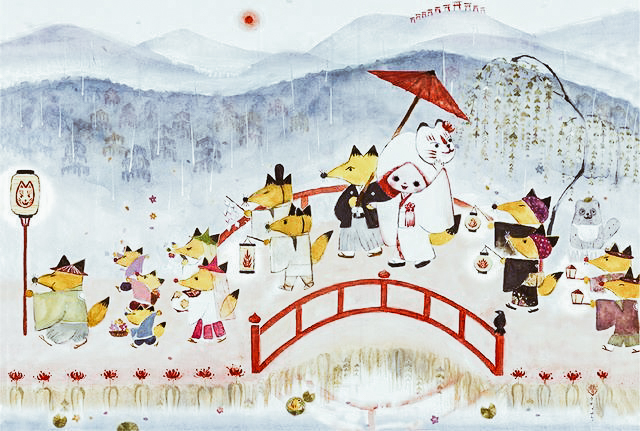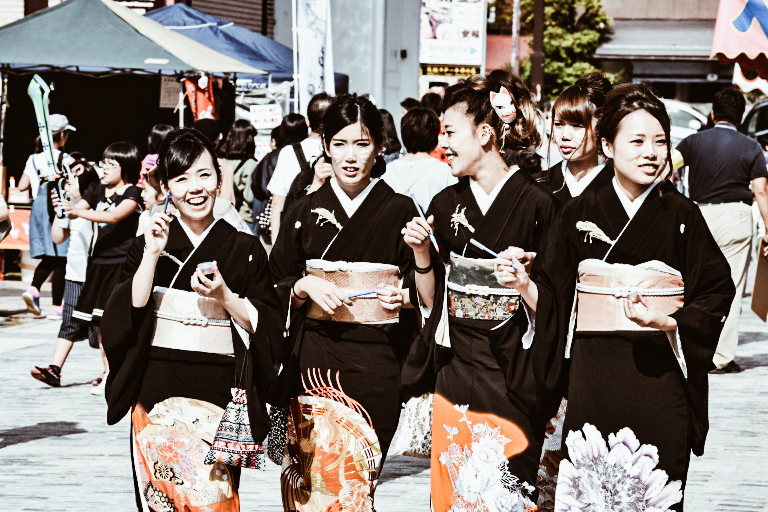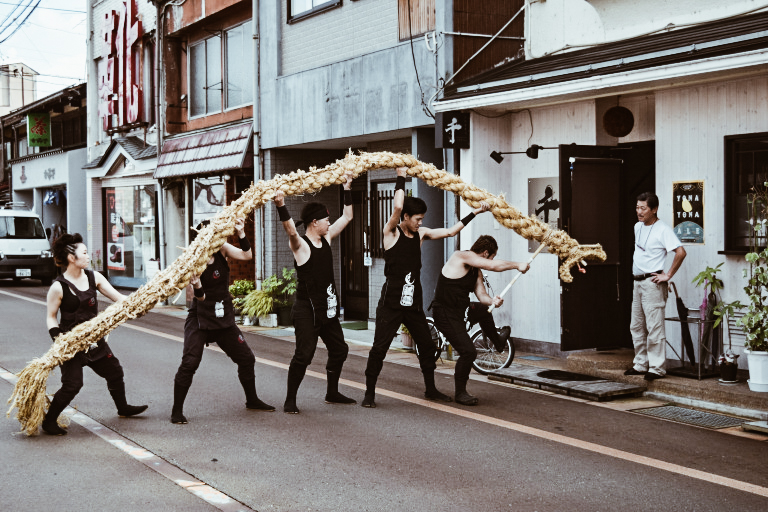Kitsunebi Matsuri, when folklore comes to life
In ancient Japanese folklore, the Kitsunebi (狐火, foxfire) was a yōkai that, overnight, suddenly appeared as a glowing red-orange and sometimes blue light. The Kitsunebi gradually increased to cover vast areas, reaching even 4km! It was believed that they were torches of a procession of foxes marching for their wedding. The lights were sighted by farmers in the mountains and were considered a good harbinger for the harvest. In fact, the greater the number of lights seen, the more fruitful was the harvest. However, no human was allowed to approach: those who tried were condemned to vanish.

photo credits: tradurreilgiappone.com
In particular, the stories tell of the marriage between Otonosama, the king who lived in Furukawa, and Okon, the daughter of the fox God. This fascinating image is the origin of the Hida Furukawa Kitsunebi Matsuri (騨古川きつね火まつり). This festival is celebrated every year, on the fourth Saturday of September in Hida Furukawa, a picturesque and rural town full of beautiful landscapes, where even today you can breathe a life far from the frenzy of the metropolis.

photo credits: tradurreilgiappone.com
Happiness and prosperity!
Like almost all the festivals we are used to now, the Kitsunebi Matsuri also aims to bless the harvest, happiness and prosperity for families.

photo credits: myjapantravels.wordpress.com
But what exactly does the Kitsunebi Matsuri consist of??
First of all, all the participants have fox mustaches drawn on their faces, be they children or elderly, shopkeepers on the road or tourists. It begins with the blessing of local businesses: the dancers carry a dongamaki, a 5 meter long snake, door to door.

photo credits: myjapantravels.wordpress.com
After that the main event begins. We could say that it is a marriage, but not a common one, but a solemn procession in which the foxes’ wedding is celebrated, the Kitsune no Yomeiri.

photo credits: myjapantravels.wordpress.com
The future spouses, a couple bound in real life, are chosen by a pool of candidates at the national level in the town where the wedding ceremony will be held. The long march will lead the bride to the groom as night falls when the Kistunebi begins (a torchlight procession). Those who attend the whole procession will be blessed and can make a wish like a good harvest, or happiness for their family or prosperity in business.

photo credits: tokyopic.com
A romantic curiosity
From 1392, throughout the Muromachi period until the end of the nineteenth century, when Western wedding ceremonies replaced traditional Japanese ceremonies, weddings were held at night and the bride was escorted to her new home by a parade of lights.
Share this:
- Click to share on Facebook (Opens in new window)
- Click to share on Twitter (Opens in new window)
- Click to share on Tumblr (Opens in new window)
- Click to share on Pinterest (Opens in new window)
- Click to share on Telegram (Opens in new window)
- Click to share on WhatsApp (Opens in new window)
- Click to share on Reddit (Opens in new window)
- Click to print (Opens in new window)






